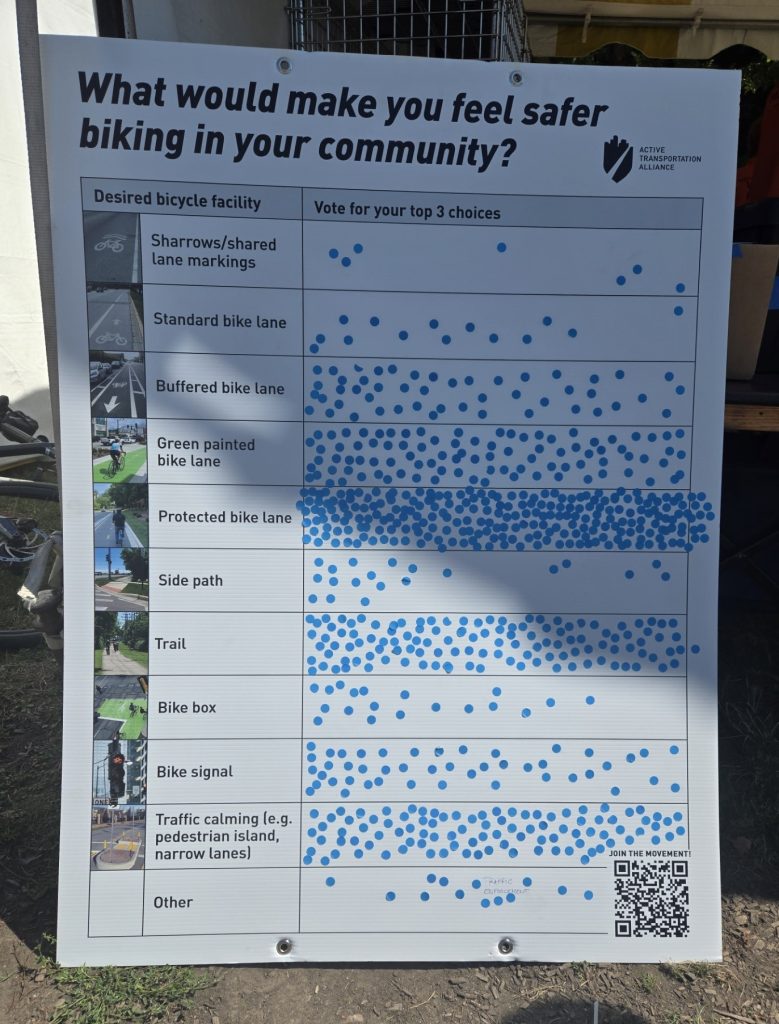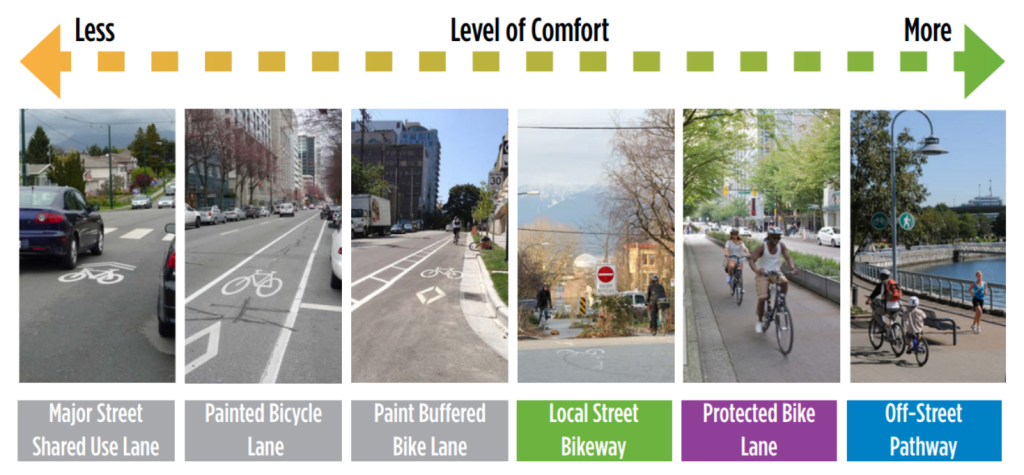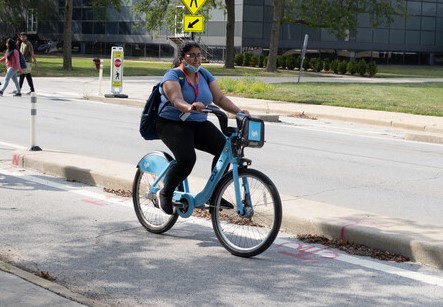When it comes to keeping people biking safe, some bike infrastructure works much better than others.
To understand peoples’ preferences, we asked some participants at our recent Bike the Drive event to let us know what bike infrastructure made them feel most safe.
We asked participants to examine a list of bike safety infrastructure improvements and vote for their favorite options (see photo below).
As you might expect, people overwhelmingly wanted protected bike lanes — physical separation from fast-moving vehicle traffic.
Not far behind protected bike lanes were trails, green painted bike lanes, and traffic calming efforts.
Some of the people we spoke to were unclear about the most common types of bikeways and bike infrastructure improvements. As a result, we thought it could be helpful to provide a quick overview of the spectrum of different types of cycling infrastructure and their associated stress levels.
HIGHER STRESS FACILITIES
- Sharrows: Offer minimal safety benefits and do little to encourage hesitant cyclists.
- Standard bike lanes: While a single white line painted on the road can remind drivers to watch for people biking, these types of of bike lanes — the bread and butter of bike infrastructure — do little to increase the safety. Making matters worse, standard bike lanes often place people biking in the “door zone” of parked cars.
- Buffered bike lanes: These types of bike lanes offer a small amount of improvement over standard bike lanes with an additional painted buffer zone between bikes and cars, but still no real protection. Alas, some drivers feel that both buffered and standard bike lanes are convenient parking spots, putting people on bikes into dangerous situations.
LOWER STRESS FACILITIES
- Neighborhood greenways: Sometimes called bicycle boulevards, these residential street bikeways offer a low-stress alternative to arterial streets. They often incorporate traffic calming for motor vehicles, signage, pavement markings, and sometimes two-way bike travel on one-way side streets.
- Protected bike lanes: Considered the gold standard for safe on-street cycling, these lanes feature physical barriers separating cyclists from traffic. After much lobbying from Active Transportation Alliance and other advocates, the city of Chicago agreed to replace all the flexible posts on protected bike lanes with concrete protection.
- Multi-use trails: Most people agree that pedaling through trees is a whole lot better than pedaling through traffic. While trails often don’t link up with needed destinations, we’re working with partners around the region to make trails more connected to places people need to go.
- Side paths: A cousin of the trail, side paths run parallel to roads. They’re more common in suburban or rural communities where there’s often more roadside space available.

Bikeways of all stripes offer greater safety for people biking when they make use of traffic calming infrastructure, which is any type of road improvement that protects people outside of cars and encourages drivers to slow down and pay attention.
It’s a growing toolbox of curb extensions, speed bumps, pedestrian islands, narrowed car raised crosswalks, and colored paint, among many other options.
Another important companion to biking infrastructure is a lower speed limit.
When drivers kill or injure people walking or biking, it’s often the result of a driver going too fast. Because of the role speed plays in crashes, lowering the speed limit even a small amount can have an outsized effect on road safety.

THE IMPACT OF SAFE CYCLING INFRASTRUCTURE
While protected bike lanes and trails have become increasingly common thanks to the efforts of the Active Transportation Alliance and other advocates, we still have a long way to go before local residents can reach common destinations by using a network of safe biking options.
Low-stress bikeways are the cornerstone of creating urban environments that welcome cyclists of all ages and abilities. By designing infrastructure that’s safe and accessible for both 8-year-olds and 80-year-olds, we ensure comfort for everyone in between.
These bike-friendly spaces do more than just promote physical activity; they help create cleaner, healthier communities while offering a viable transportation option for all.
Do you want to learn more about bike safety and safe street design? Make sure to tune in below and listen to one of our latest webinars in collaboration with AARP Illinois.

